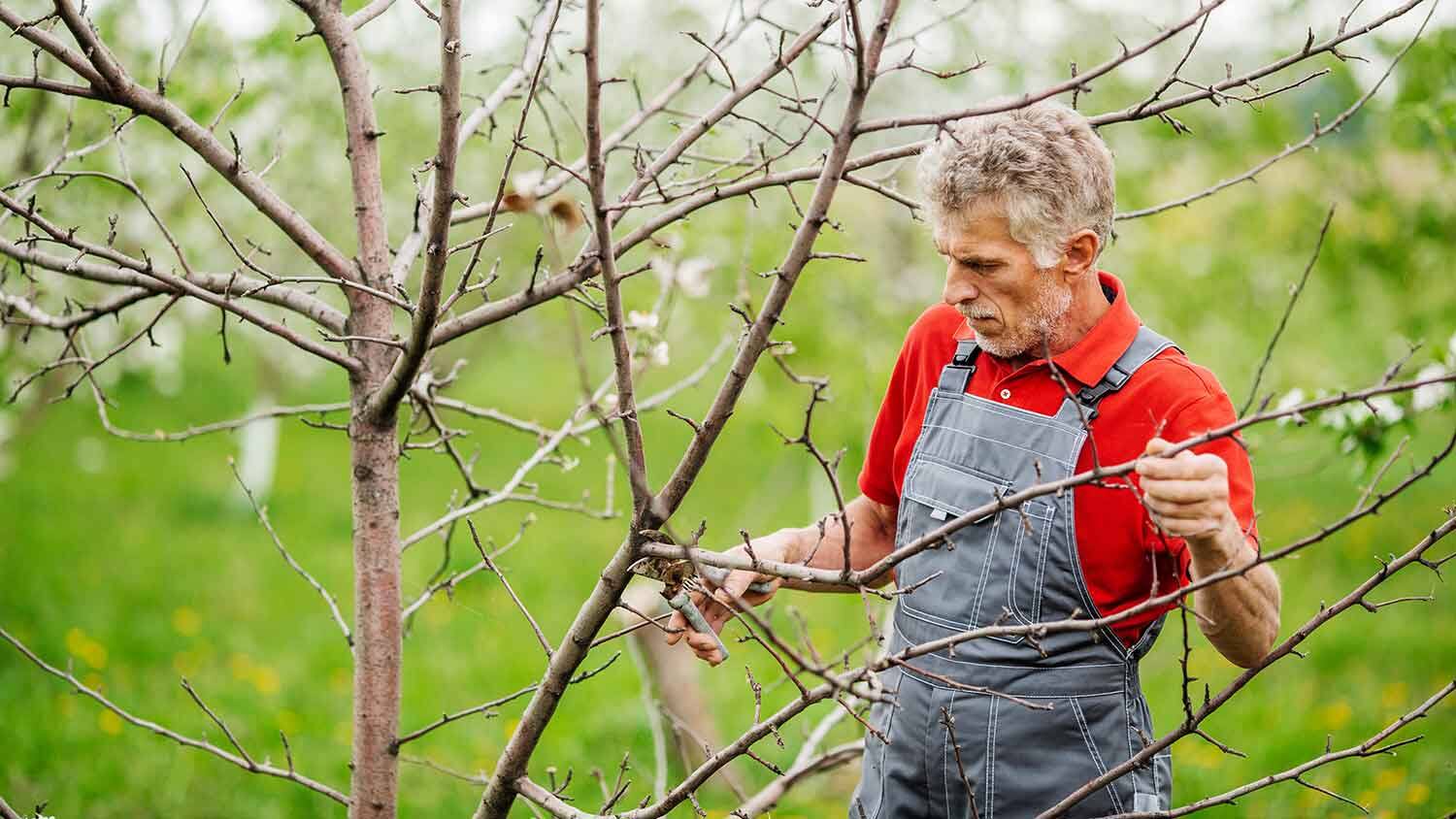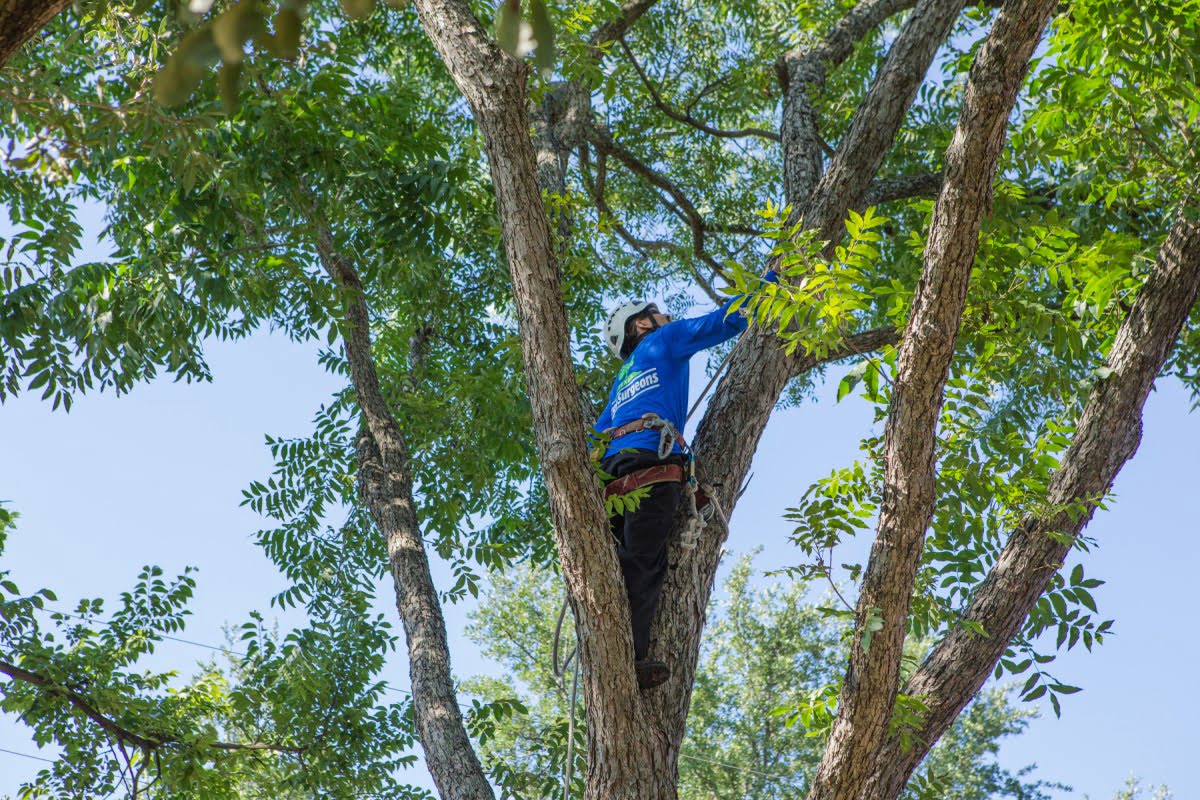Home>Gardening Tips and Tricks>Problem Solving>When To Trim Evergreen Trees


Problem Solving
When To Trim Evergreen Trees
Modified: January 22, 2024
Learn when to trim evergreen trees for problem solving and proper growth. Get expert advice on pruning techniques and timing.
(Many of the links in this article redirect to a specific reviewed product. Your purchase of these products through affiliate links helps to generate commission for Chicagolandgardening.com, at no extra cost. Learn more)
Table of Contents
Introduction
Evergreen trees are a beautiful addition to any landscape, providing year-round green foliage and adding a touch of elegance to your outdoor space. However, just like any other plants, evergreen trees require regular maintenance to thrive and stay healthy.
One important aspect of caring for evergreen trees is knowing when and how to trim them. Trimming can help maintain their shape, promote healthy growth, and prevent potential hazards. But when is the right time to trim evergreen trees? And what factors should you consider before picking up those pruning shears?
In this article, we will explore the factors to consider before trimming evergreen trees, signs that indicate the need for trimming, the best time of year to trim, the tools and techniques for successful trimming, and when it might be best to hire a professional tree trimming service.
Understanding these considerations will help you make informed decisions when it comes to caring for your evergreen trees and ensure their longevity and beauty for years to come.
Factors to Consider Before Trimming Evergreen Trees
Before reaching for your pruning shears, it is important to take a few factors into consideration. Understanding these factors will help you determine if and how much trimming your evergreen trees require.
1. Tree Species: Different evergreen tree species have different growth habits, including natural shapes and growth rates. Understanding the specific characteristics of your tree species will help guide your trimming decisions. Some trees naturally maintain their shape with minimal trimming, while others may require more regular pruning to keep them looking their best.
2. Tree Health: Before trimming, assess the overall health of your evergreen tree. If the tree is stressed, diseased, or has dead branches, trimming may be necessary to improve its overall health and vigor. However, be cautious not to remove more than a third of the tree’s foliage, as this can stress the tree further.
3. Growth Pattern: Observing the growth pattern of your evergreen tree will also help guide your trimming decisions. Pay attention to areas where the tree is densely packed with branches, which may hinder airflow and sunlight penetration. Trimming these areas can promote better overall health by reducing the risk of fungal diseases.
4. Desired Aesthetic: Consider the desired appearance of your tree. Are you aiming for a formal, symmetric shape, or do you prefer a more natural, organic look? Trimming can help achieve the desired shape and promote healthy growth while maintaining the tree’s aesthetic appeal.
5. Weather Conditions: It is essential to consider the weather conditions when planning to trim evergreen trees. Avoid trimming during periods of extreme heat, frost, or drought, as this can put additional stress on the tree. Opt for cooler, mild weather when the tree is not actively growing.
By considering these factors, you can make informed decisions about when and how to trim your evergreen trees. Keep in mind that it is always better to be conservative in your pruning, as removing too much foliage can harm the tree’s overall health and appearance.
Signs That Indicate the Need for Trimming Evergreen Trees
While regular trimming is beneficial for evergreen trees, it’s important to know when it’s necessary. Here are some signs that indicate the need for trimming:
1. Dead or Damaged Branches: If you notice dead, broken, or damaged branches on your evergreen tree, it’s a clear sign that trimming is necessary. Removing these branches will not only improve the tree’s appearance but also prevent the risk of falling branches and potential damage to property or individuals.
2. Overgrown or Misshapen Appearance: An evergreen tree may start to lose its natural shape or become overgrown, affecting its visual appeal and the overall aesthetics of your landscape. Regular trimming can help maintain a well-balanced shape and keep the tree looking healthy and attractive.
3. Low-Hanging Branches: If the lower branches of your evergreen tree are touching the ground or obstructing walkways, it’s a sign that trimming is needed. Trimming these lower branches can create more space and improve accessibility in your outdoor area.
4. Poor Airflow and Sunlight Penetration: Dense growth in an evergreen tree can block airflow and limit sunlight from reaching the inner branches. This can lead to increased moisture levels and create an environment conducive to the growth of fungal diseases. Trimming can help open up the canopy, improve air circulation, and allow more sunlight to penetrate.
5. Foliage Discoloration or Disease: If you notice discoloration, wilting, or other signs of disease on the foliage of your evergreen tree, it’s important to take action. Trimming affected branches can help control the spread of the disease and promote healthy growth.
Remember to regularly inspect your evergreen trees for these signs and take appropriate steps to trim them as needed. Taking a proactive approach to tree maintenance can help ensure the health and beauty of your evergreen trees for years to come.
Best Time of Year to Trim Evergreen Trees
The timing of when to trim evergreen trees is crucial to promote healthy growth and minimize stress to the tree. The best time to trim evergreen trees may vary depending on the specific tree species, but there are general guidelines to follow:
1. Late Winter to Early Spring: For most evergreen tree species, the optimal time for trimming is during late winter to early spring, before new growth begins. Trimming during this time allows the tree to allocate energy towards new growth without the added stress of pruning.
2. Dormant Period: Trimming evergreen trees during their dormant period, when they are not actively growing, is ideal. During this time, the tree is less likely to experience excessive sap flow or be susceptible to pests and diseases.
3. Avoid Extreme Weather: It’s important to avoid trimming evergreen trees during periods of extreme weather conditions, such as during heatwaves or freezing temperatures. Extreme weather can put additional stress on the tree and hinder its ability to recover from pruning.
4. Spring Flowering Evergreens: If you have spring-flowering evergreens, such as Rhododendrons or Azaleas, it’s best to trim them right after they finish blooming. Trimming them at this time allows the tree to set new buds for the following year’s blooms.
5. Established Evergreen Trees: Once an evergreen tree has reached its desired shape and size, it may only require minimal trimming to maintain its appearance. Light pruning can be done throughout the year, as needed, to remove dead or damaged branches and maintain the tree’s overall health.
Always consult specific guidelines for your particular evergreen tree species, as some may have unique trimming requirements. Understanding the optimal timing for trimming ensures that your evergreen trees receive the best care and have the opportunity to thrive.
Tools and Techniques for Trimming Evergreen Trees
When it comes to trimming evergreen trees, having the right tools and using the proper techniques makes all the difference. Here are some essential tools and techniques to ensure successful trimming:
1. Pruning Shears: Invest in a good pair of pruning shears or hand pruners for small branches and foliage. These are handy for precision trimming and removing smaller branches.
2. Loppers: Loppers are used for cutting larger branches that are too thick for pruning shears. They provide extra leverage and cutting power and are ideal for branches up to two inches in diameter.
3. Pruning Saw: For larger branches that cannot be cut with pruning shears or loppers, a pruning saw is the tool of choice. Look for a saw with a curved blade for easier cutting and efficient removal of larger branches.
4. Safety Gear: Always prioritize safety when trimming evergreen trees. Wear gloves to protect your hands, safety goggles to shield your eyes from debris, and a hard hat to protect your head in the event of falling branches.
5. Proper Cutting Techniques: When trimming evergreen trees, it’s important to make clean, precise cuts. Avoid leaving stubs as they can become entry points for pests and diseases. Make cuts just outside the branch collar, which is the swollen area where the branch attaches to the trunk or another branch.
6. Step Ladder or Pole Pruners: For taller evergreen trees, a step ladder or pole pruners can be helpful tools. These allow you to safely reach higher branches without the need for climbing the tree or using a ladder.
7. Disinfecting Tools: To prevent the spread of diseases between trees, it’s essential to disinfect your tools after each use. Use a solution of one part bleach to nine parts water or a disinfectant specifically designed for gardening tools.
When trimming evergreen trees, it’s important to assess the size and scope of the task. For extensive pruning or if you’re uncomfortable with heights, it’s recommended to hire a professional tree trimming service to ensure the task is carried out safely and efficiently.
Using the right tools and techniques for trimming evergreen trees will help promote healthy growth and maintain the overall appearance of your trees.
Hiring a Professional Tree Trimming Service
While it may be tempting to tackle tree trimming on your own, there are situations where hiring a professional tree trimming service is the best option. Here are some reasons why you might consider hiring professionals:
1. Expertise and Experience: Professional tree trimming services have the knowledge, expertise, and experience to handle tree trimming effectively. They are trained in proper trimming techniques, ensuring the health and safety of your trees.
2. Safety: Tree trimming can be dangerous, especially when dealing with large or tall trees. Professional tree trimmers have the necessary safety equipment and know how to work at heights without putting themselves or others at risk.
3. Equipment: Tree trimming often requires specialized equipment that may not be readily available to homeowners. Professional tree trimmers come equipped with the proper tools and machinery to efficiently and safely trim trees.
4. Time and Convenience: Tree trimming can be time-consuming, especially if you have multiple trees or large ones to trim. Hiring professionals saves you time and effort, allowing you to focus on other tasks or activities.
5. Tree Health and Aesthetics: Professional tree trimmers understand the unique needs of different tree species. They can assess the health of your trees and provide guidance on the best trimming practices to maintain tree health and enhance their aesthetics.
6. Liability Insurance: Hiring a professional tree trimming service typically means they carry liability insurance. This protects you from any potential damages or injuries that may occur during the trimming process.
When selecting a professional tree trimming service, consider their reputation, experience, and qualifications. Look for certified arborists who have received training in tree care.
While hiring professionals may come with a cost, it can save you time, ensure the safety of your property, and help maintain the health and beauty of your trees in the long run.
Conclusion
Trimming evergreen trees is an essential part of their care and maintenance. By considering factors such as tree species, health, growth patterns, desired aesthetics, and weather conditions, you can make informed decisions about when and how to trim your trees.
Signs that indicate the need for trimming include dead or damaged branches, overgrown or misshapen appearance, low-hanging branches, poor airflow, sunlight penetration, or foliage discoloration/disease.
The best time to trim evergreen trees is typically during late winter to early spring, when the tree is in its dormant period. Investing in the right tools, such as pruning shears, loppers, pruning saws, and safety gear, will help you trim the trees effectively and safely.
In some cases, it is advisable to hire a professional tree trimming service. They bring expertise, experience, safety measures, and specialized equipment to ensure the health and aesthetics of your trees while saving you time and effort.
Ultimately, by taking care of your evergreen trees through proper trimming, you can enhance their longevity, beauty, and resilience. Regular trimming helps maintain a well-shaped tree, promotes healthy growth, and prevents potential hazards.
Remember to always consult specific guidelines for your particular tree species and seek professional advice if needed. With proper care and attention, your evergreen trees will continue to bring beauty and joy to your outdoor space for years to come.










